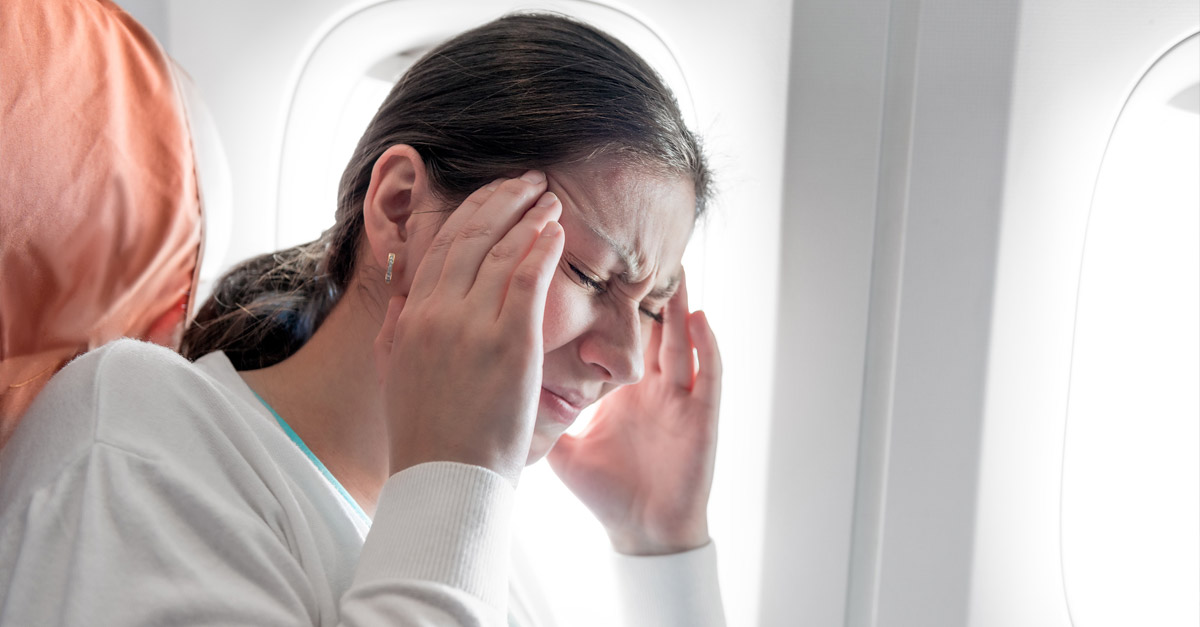It’s a terrifying thought—what happens if you’re in an airplane and suffer a health crisis at 36,000 feet? Who will help…and will you be in capable hands? Perhaps even more important, is there anything you can do to prevent a midair emergency from happening in the first place?
Here’s what you need to know…
GET THE FACTS
Even though it’s frightening to contemplate needing emergency medical care while on a plane, the reality is that these situations are statistically quite rare.
Here are the facts: While about 2.75 billion people fly worldwide on commercial aircraft annually, just 16 passengers for every one million (or about 44,000) require medical care while on a flight, and only 0.3% (about 132) of those passengers end up dying as a result of the health problem.
To better understand the nature of midair medical problems, a seminal study published in 2013 in The New England Journal of Medicine analyzed in-flight emergency calls that occurred over a nearly three-year span from five domestic and international airlines.
What were the passengers’ chief health complaints? Most common was feeling light-headed or faint (37%)…respiratory symptoms, such as an asthma attack (12%)…and nausea or vomiting (9.5%). Lower down the list were cardiac symptoms (7.7%)…seizures (5.8%)…and abdominal pain (4%).
Temporary problems: Since only about one-third of airline passengers who become ill mid-flight get transported to a hospital upon landing—and just 9% of them end up being admitted—that leaves two-thirds who walk away once they reach the next airport.
Most often, the medical problems that passengers experience while on a plane are minor. Dehydration is a common complaint, likely due to a combination of dry cabin air and passengers not eating or drinking on a regular schedule. For most ill passengers, symptoms resolve quickly—often within 30 minutes.
WHO STEPS UP?
There’s no question that it can be alarming to hear the captain’s voice announce over the loudspeaker: “If there’s a physician or medical personnel on board, please identify yourself to a flight attendant.” But that announcement occurs only after cabin personnel and/or a medical volunteer has already performed an initial assessment of the ill passenger. In most cases, a ground-based medical communications center has also been contacted for immediate input on the situation.
What most people don’t realize is that flight attendants—who are better known for handing out drinks and snacks—must have basic emergency medical skills, such as annual training in cardiopulmonary resuscitation (CPR). They must also receive training on using the plane’s medical kit (which includes oxygen…medication, such as nitroglycerin…IV fluids…and resuscitation equipment). These requirements, which also include having an automated emergency defibrillator (AED) on board, apply to US-based airlines, while other countries have different requirements.
Safety in numbers: Nearly half the time, there is a physician passenger on board who steps up to provide input on the patient’s medical status. In roughly one-quarter of in-flight emergencies, a nurse or other health-care professional, such as a paramedic, comes forward.
Even if there’s no doctor or other health-care professional on board, a sick passenger can get the benefit of professional medical guidance because the pilot in command has the ability to communicate with ground-based medical support (while the copilot flies the plane) to ask real-time questions to guide those offering medical assistance.
TO DIVERT OR NOT TO DIVERT
Movie portrayals of in-flight emergencies often depict a hasty landing at a nearby airport so the passenger can be whisked away for emergency medical treatment. But in reality, that outcome occurs less than 7% of the time—and only for serious problems such as chest pain, significant respiratory distress or stroke symptoms.
To divert or not? Diverting a flight for a medical emergency is a huge inconvenience for the other passengers, and sometimes the intended airport is not that far away. Flight and ground medical personnel must consider not only the seriousness of the passenger’s medical situation but also the likelihood that he/she will benefit from an earlier landing to receive emergency medical assistance. In many cases, there’s no realistic option for diverting—for example, if the plane is over an ocean. While these factors are being weighed, the ill passenger continues to receive medical attention on board the plane.
HOW TO AVOID AN EMERGENCY
Many in-flight emergencies aren’t necessarily a surprise to the sick passengers. People with chronic health conditions, such as diabetes or lung or cardiac problems, are generally aware if they’re not feeling quite right—and know how to counteract routine symptoms—before boarding an airplane. In this regard, travelers have some control and responsibility to lower their risks of a midair medical crisis.
Plan ahead: If you are newly diagnosed or have a preexisting medical condition, such as chronic lung disease or heart disease, or have had a recent medical procedure, discuss upcoming air travel (regardless of the duration of the flight) with your doctor to determine if special equipment or care is needed.
For example, people with diabetes need to measure their blood sugar (glucose) levels regularly, so they should bring their glucometer and medications on board with them—and not stow them in checked bags. Anyone needing supplemental oxygen can coordinate the use of an airline-approved portable oxygen concentrator with the airline at least a few days in advance.
Also: If you’re feeling ill just before flying, alert a gate attendant or other airline personnel for guidance on continuing with travel plans.
The most sensible tip for all? Make sure you’re hydrated and rested (exhaustion can contribute to feeling ill) before you board a plane. And after passing through the security gate, it never hurts to grab a bottle of water!


